Reviews
Read what some of the leading reviewers said about some of
David’s designs!
the amount of low bass energy
this speaker can produce is astounding..
is up there with the
established big boys, ATC, Genelec, PMC and the rest..
Hugh Robjohns
..an optional, I would
suggest imperative extra is on site analysis and alignment of the
system..
the
results were most impressive, exhibiting delicacy and presence
conveying the subtle detail..that few boxed loudspeakers can equal
Ivor Humphreys
"there
was absolutely no hint of either compression or distortion, just
limitless power coupled with lightning speed"
David Allcock
Other Links
Peter Mapp article
and others, Look here.
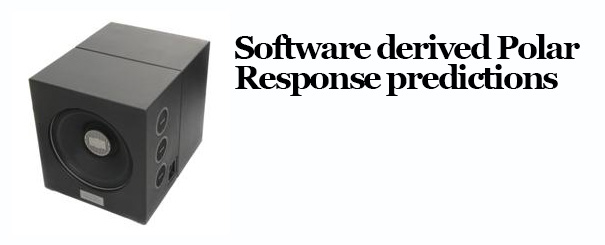
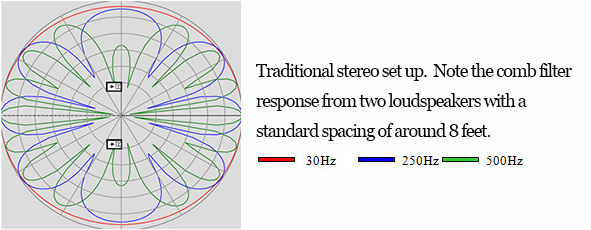
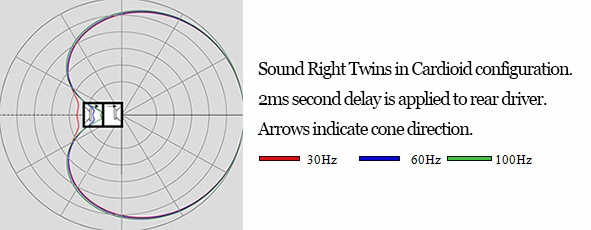
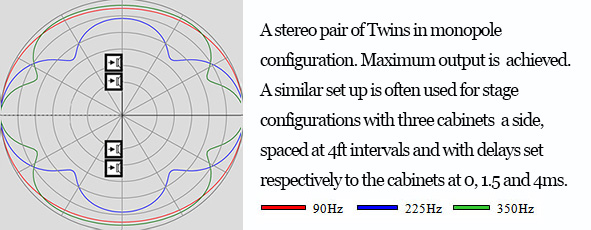
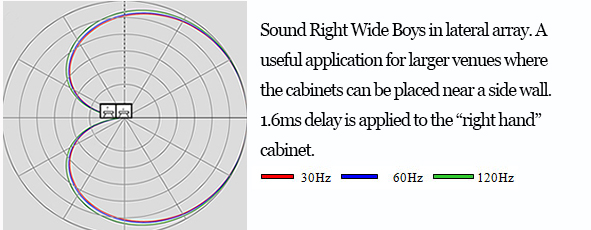
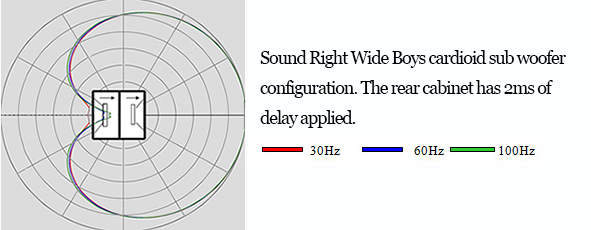
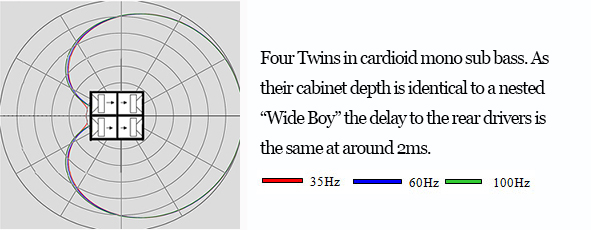
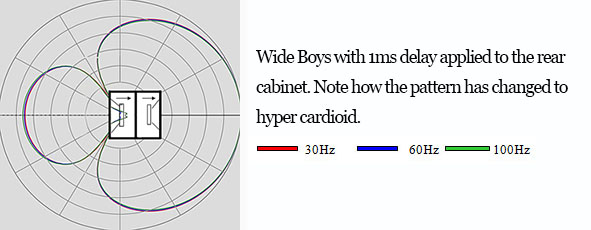
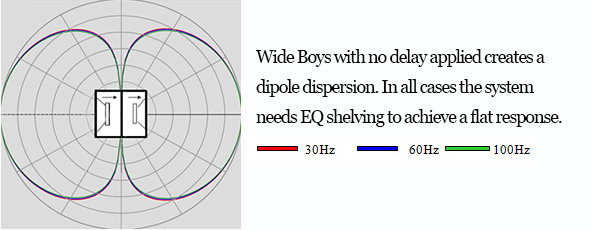
What these plots reveal is that a single pair of full range loudspeakers is not a good starting point if the target is for even sound coverage throughout the listening area. Peaks and nulls create a “comb filter” response as seen in the first polar plot.
It is true that in smaller listening environments the reverberation of the room will mask and reduce the problems but in larger settings the effects become increasingly obvious.
The job of creating a flat response (an even sound pressure level) in a space is made a lot easier if combinations of loudspeakers can be implemented. The ability to adapt modular scalable cabinets to create the different dispersion patterns of cardioid, super or hyper cardioid, dipole, bipole or monopole will improve the chances of creating good sound. In fact without this flexibility the task is virtually impossible.
Starting with bass reproduction, due to the wavelengths involved, spacing bass cabinets is a bad idea. The physical distance between them will cause large interference patterns of peaks and troughs in response which again are not so noticeable in a small space but clearly audible in larger venues. Grouping them in nests and driving them in mono up to around 100Hz will probably be the best solution. With the Sound Right Wide Boys it is possible to combine the cabinets to create monopoles or as seen in the polar plots, cardioids through to dipoles.
Any dispersion type is possible by reducing the delay from around 2ms (for a Wide Boys in cardioid) to 0ms (dipole). As the delay is reduced the “balloon” pattern dispersion starts to form behind the cabinets as well creating at first a super cardioid (small balloon!) through to the “larger balloon” representing hyper cardioid until equal in size, at which point it is a dipole!
This is true for any of the Sound Right loudspeakers when grouped where the dispersion type is produced by implementing delays from DSP loudspeaker management systems.
Nothing comes for free of course and depending on distance between drivers, the delays will vary and so will the required EQ to re-establish a flat response. Sound Right understand that to optimise sound systems they need to be managed. They also need to be set up and analysed to produce optimum results!
Sound “steering” and “beam width” control may seem a little over zealous for the home listener but for the larger venue which may easily encompass conference, club, disco, schools and installation venues, the ability to control these factors is essential for good audience coverage.
But utilising this knowledge may also bring rewards in larger home listening rooms and studio’s. Having combinations of loudspeakers to work with will almost certainly improve the chances of creating better sound quality and a lot less reliance on a single listening position, the “hot seat”.
Starting from bass reproduction it is argued that there are benefits to coupling cardioid sub woofers to small rooms (See the L Ferekidis article). This performance potential is further enhanced if a reduction in the delay applied produces all the response patterns from cardioid, through super cardioid to hyper cardioid to dipole..
Twins are a stand alone “dual chamber aperiodic” design are capable of very high quality sound reproduction from their Fs to around 1k8Hz. When working in pairs they are capable of so much more than just the usual benefits derived from mutual coupling and increased power handling.
Being able to implement them as monopoles or cardioids through to dipole brings sound coverage that is just not possible with a single stereo pair. Combined with Wide Boys as a sub woofer the combinations are virtually endless!
Twins have a simple mounting
fork arrangement that spans the two cabinets enabling them to be used
with the DML
Panels but a flat speaker platform can also be attached.
Wide Boys and Twins and your favourite satellite nearfields may be all you need to create a
full range studio monitoring set up capable of prodigious output, flat
response, controllable dispersion and low distortion capable of
exceeding the quality of any single pair of “stand alone” designs,
regardless of their cost!
DML Panels are a recommended
alternative. Unlike any other traditional loudspeaker they have the
benefits of virtual constant directivity from 100Hz to 10Khz..(read
more about them in the article sections), no cabinet and no crossovers
and are less prone to exciting room resonances than traditional
pistonic loudspeakers. Sound Right recommend them for a wide range of
applications!
Consultation, system installation, set up and calibration is all part of the portfolio of services that Sound Right is pleased to offer ensuring you get the optimum performance from your system!
Please view the specific |
